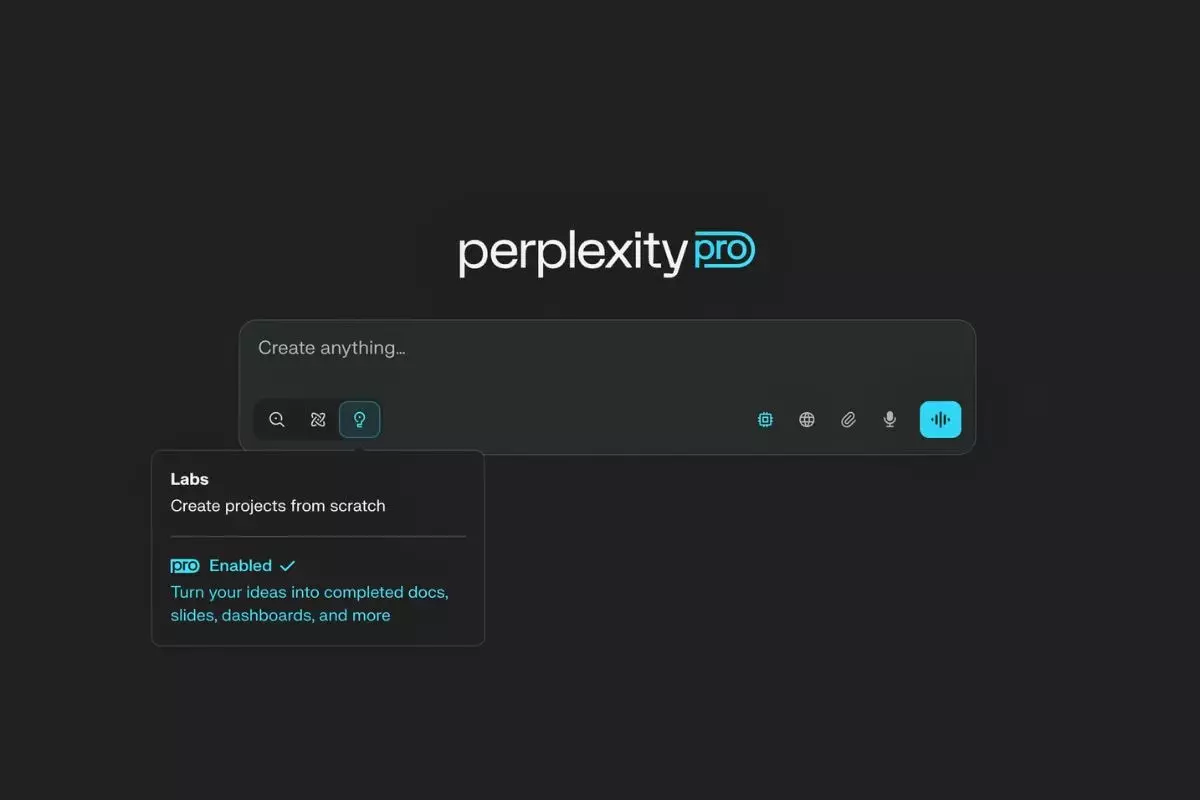The launch of Perplexity Labs marks a significant milestone in the evolving narrative of artificial intelligence—one that simultaneously excites and unsettles. Aimed at transforming our interactions with technology, this innovative feature has the potential to change the landscape of complex research and project development. However, while it promises to simplify tasks, we must critically assess what this could mean for creativity, oversight, and ethical considerations.
Perplexity Labs operates on the reliable premise that deeper web browsing and code execution can foster a new realm of dynamics in user experience. Rather than merely answering questions, it propels users into a world where text prompts can metamorphose into detailed reports, spreadsheets, or even rudimentary web applications. But as we embrace this technological leap, we must question the implications of creating an AI that can effectively think and act on our behalf.
Empowering Users or Diminishing Skills?
One of the most commendable aspects of Perplexity Labs is its democratization of complex tasks. By allowing users to generate multi-faceted assets and documents with less hands-on expertise, it may lead to an unprecedented accessibility of technology. For those estranged from the intricacies of coding or data analysis, this could serve as a lifeline.
However, herein lies the paradox. As we enable AI to execute tasks traditionally reserved for human intellect, will we slowly erode our own skills? The art of problem-solving, critical thinking, and analytical reasoning could become a relic if users begin to rely heavily on AI systems. The risk of becoming overly dependent on Perplexity Labs for cognitive endeavors cannot be understated. Not being engaged directly in the nitty-gritty of project development may also breed complacency in users, undermining the fundamental capacities that have propelled innovation for centuries.
Behind the Glamour: Questions We Must Ask
Amidst the thrill of new capabilities like chart and image creation, the intricacies of the underlying technology warrant further scrutiny. For instance, while Perplexity disguises itself as an all-encompassing support tool, its lack of clarity regarding multi-agent workflows and the specifics of its large language models raises red flags. Are these merely superficial enhancements, or do they reflect a genuine advancement in AI capabilities?
Moreover, it is imperative to consider the implications of AI taking the reins on deeper and potentially sensitive tasks. The emergence of “self-supervised” actions, where the AI independently engages in lengthy operations, dangerously edges us closer to relinquishing control over content and creativity. Will users be able to pause interactions to reevaluate their prompts, or will they be consumed by the flow of AI-generated outputs? This ambiguity highlights a vital area of concern, emphasizing the need for guidelines to ensure experts and creatives remain in command of the process.
Amplifying Innovation, Yet Avowing Caution
While it’s undeniable that Perplexity Labs ushers in a wave of opportunities—from generating complex trading strategies to weaving intricate film narratives—it’s essential to remember the duality of such a force. The charm of innovation encapsulates our curiosity but must be met with a wary skepticism. We should celebrate the enhanced productivity it brings, all while confronting the ethical responsibilities of its adoption.
A liberal approach might advocate for both widespread access to these capabilities and a nuanced understanding of their role in human endeavors. Ensuring that such technology serves as a tool for empowerment rather than a crutch for avoidance will be the crucial balance we must strike. In this new age of AI, the ultimate question remains: will we wield it as an ally to enhance our inherent capabilities, or allow it to overshadow our potential for human ingenuity? The answer to this question will ripple across industries, shaping the future of work, creativity, and beyond.


Leave a Reply